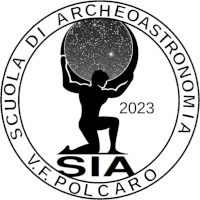Speaker
Description
Sommario : Durante il Medioevo l'edificazione di castelli ex novo o la loro ristrutturazione veniva eseguita rispettando determinate orientazioni astronomicamente significative di particolare rilevanza simbolica ed esoterica. Nella presente ricerca sono state esaminate sia la posizione geografica sia l'orientazione rispetto alle direzioni astronomiche fondamentali della struttura del castello con l'obbiettivo di mettere in evidenza l'esistenza o meno di linee astronomicamente significative deliberatamente codificate durante la fase costruttiva o di ristrutturazione ed il loro significato nell'ambito della visione del mondo e dell'universo imperante in quei secoli.
In uno dei nostri precedenti lavori sugli allineamenti architettonici in un certo numero di chiese templari, applicando una metodologia rigorosa, abbiamo scoperto che l'uso di riferimenti astronomici all'orizzonte delinea l'esistenza di schemi di orientamento che i Cavalieri Templari usavano per progettare le loro chiese e castelli.
Il castello di Castelvecchio di Testona (Moncalieri, Torino)) sorge su un'altura all'incrocio fra la strada San Michele e la strada Castelvecchio a quota metri 360, su una scoscesa propaggine collinare delimitata da due rii denominati di Castelvecchio (o Rulla) l'uno e dei Negri l'altro.
I dati sono stati raccolti in situ, nella primavera del 2023 dagli autori e sono stati analizzati, ottenendo risultati notevoli.
Sono stati impiegati diversi metodi statistici e sono stati eseguiti test di base.
Gli allineamenti architettonici che abbiamo misurato, applicando una metodologia rigorosa, rivelano che l'uso di riferimenti astronomici all'orizzonte rappresenta la logica più percorribile e delinea l'esistenza di modelli di orientamento che sono stati utilizzati per la progettazione/ristrutturazione del castello, che è collegabile con il " ciclo Equinoziale e Solstiziale” del Sole, nonché il sorgere e il tramontare della Luna ai lunistizi estremi.
Si è poi proceduto all'analisi statistica, che è stata eseguita utilizzando le più recenti tecniche appartenenti alla teoria dei Dati Circolari che è una delle modalità più idonee nell'elaborazione dei dati archeoastronomici. Sono stati applicati test statistici, basati su ”artificial Neural Network “per verificare il livello di confidenza dei risultati ottenuti.
Attualmente la ricerca è ancora in corso.
Abstract: During the Middle Ages, the building of castles from scratch or their renovation was carried out respecting certain astronomically significant orientations of particular symbolic and esoteric relevance. In the present research, both the geographical position and the orientation with respect to the fundamental astronomical directions of the castle structure have been examined with the aim of highlighting the existence or otherwise of astronomically significant lines deliberately codified during the construction or restructuring phase and their meaning in the context of the vision of the world and the universe prevailing in those centuries.
In one of our previous work on the architectural alignments in a number of Templar churches, applying a rigorous methodology, we found that the use of astronomical references at the horizon outlines the existence of orientation patterns that the Templar Knights used for planning their churches and castles.
The castle of Castelvecchio di Testona (Moncalieri, Turin)) stands on a hill at the crossroads between the San Michele road and the Castelvecchio road at an altitude of 360 metres, on a steep hilly offshoot bordered by two streams called Castelvecchio (or Rulla) one and dei Negri the other.
The data was collected in situ, in the spring of 2023 by the authors and has been analyzed, obtaining remarkable results.
Several statistical methods were employed and basic tests were performed.
The architectural alignments that we measured, applying a rigorous methodology, reveal that the use of astronomical references on the horizon represents the most viable logic and outlines the existence of orientation patterns that have been used for the design/renovation of the castle, which is connectable with the “Equinoctial and Solstitial cycle” of the Sun, as well as the rising and setting of the Moon at the extreme lunar standstill.
We then proceeded to the statistical analysis, which was performed using the most recent techniques belonging to the theory of Circular Data which is one of the most suitable modalities in the elaboration of archaeoastronomical data. Statistical tests based on "artificial neural networks" were applied to verify the level of confidence in the results obtained. Currently the research is still ongoing.

